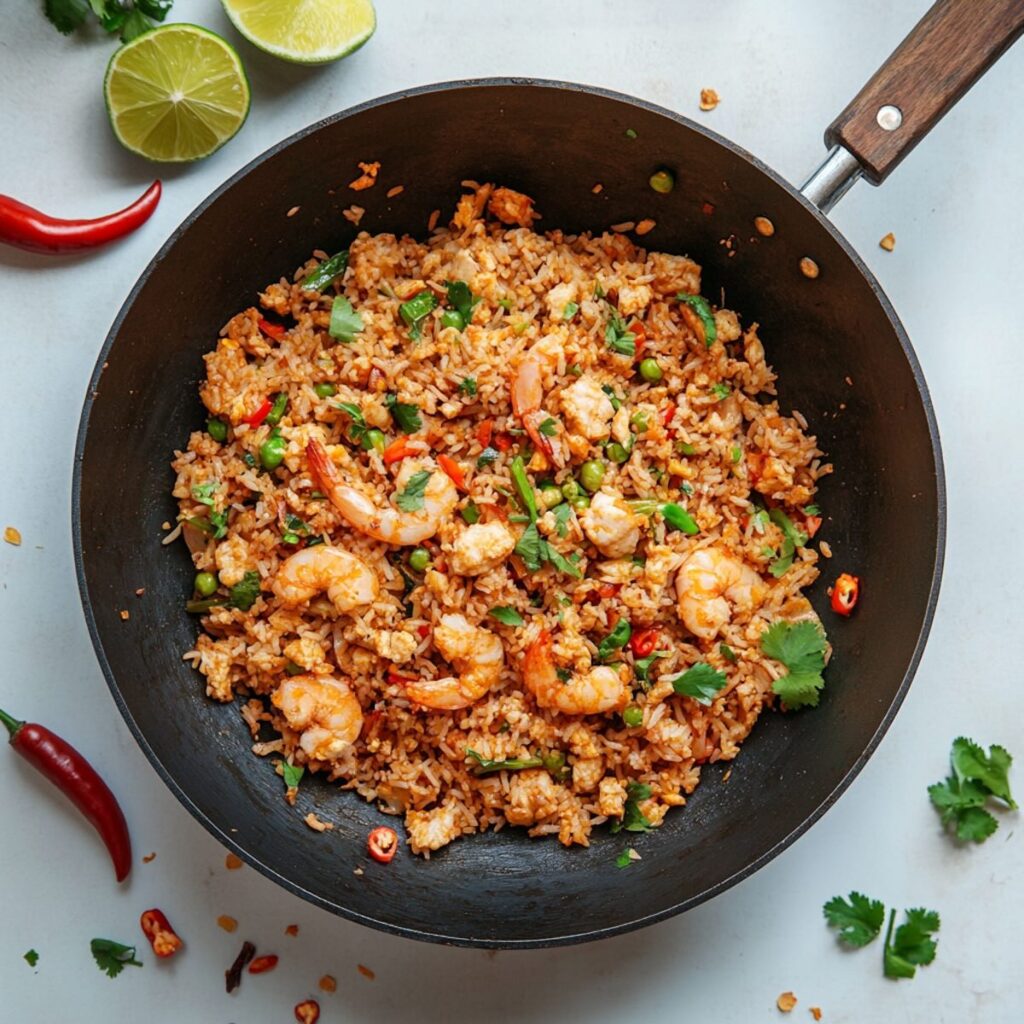
Thai fried rice is a dish that when I eat it, it’s like a warm, comforting friend, but while cooking it, it can be a mean foe.
I’ve had many a night where I thought, “Wow, I’ve got day old rice, veggies and chicken I need to use up, why don’t I make fried rice since that’s so easy?”
Then I try to make this effortless weeknight meal, and after mixing my ingredients in my wok they suddenly start to goop together, and once they goop, there is no going back from goop, and I’m left with mushy fried rice and feeling peeved that my easy, yummy Thai fried rice wasn’t what I envisioned at all.
Does fried rice every annoy anyone else??
If so, read on because after many a failed fried rice, I’ve learned how to make fried rice that, most of the time, tastes like what you would order from your favorite Asian takeout place, only better!
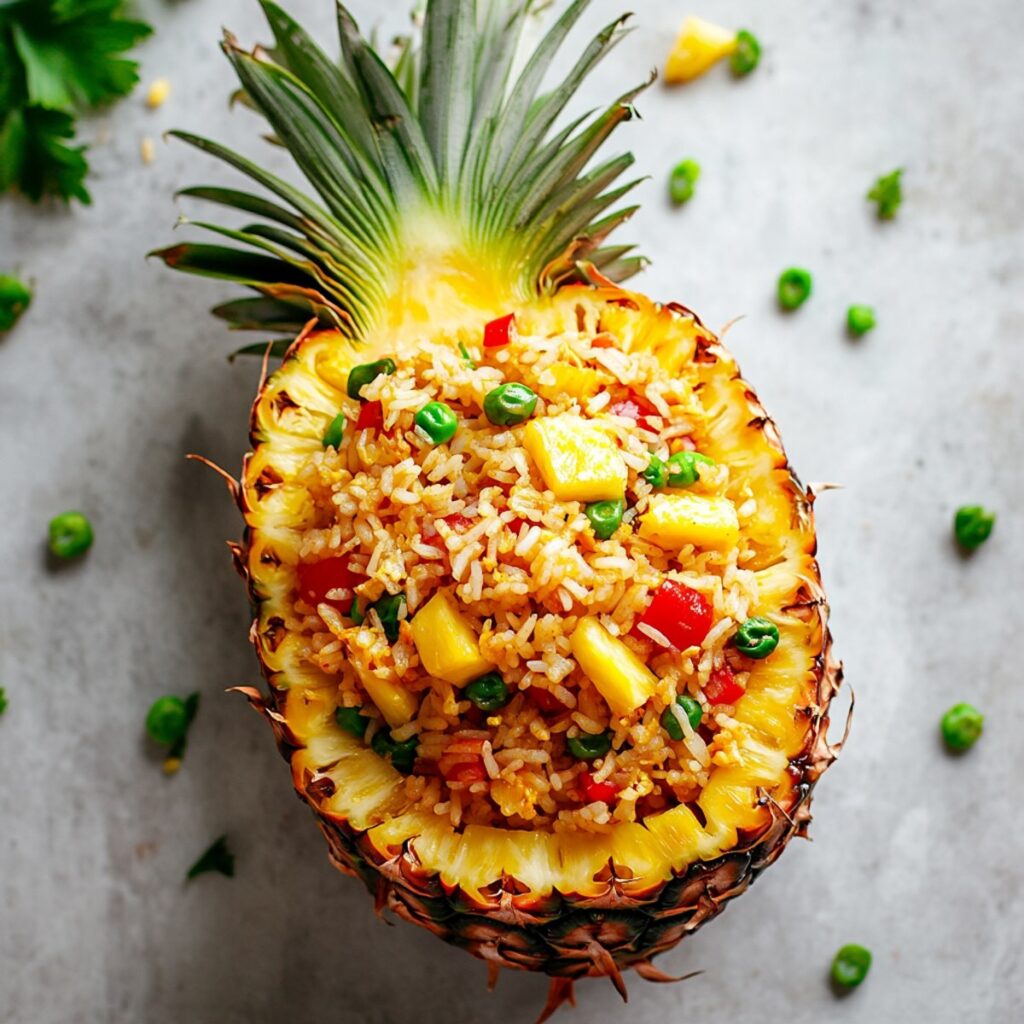
1.Start with a day or a few days old rice.
Most fried rice recipes always say start with day old rice, but it depends on how much water you cook your rice with to begin with. My Thai Hubby likes his rice more moist than most Americans, so after a day it’s still very moist. So for us it takes two days or so for it to really get to the dried texture that’s good for frying rice.
Sometimes if I’m on it (which usually I’m not) and want fried rice without having to wait for it to get dry, I’ll make rice with a little less water than called for and then it’s drier and ready to be stir-fried.
Or if I just made fresh rice, or have moist leftover rice, and all of the sudden want to make fried rice, I will spread it out on a baking sheet for at least 15 minutes, which helps it to dry up.
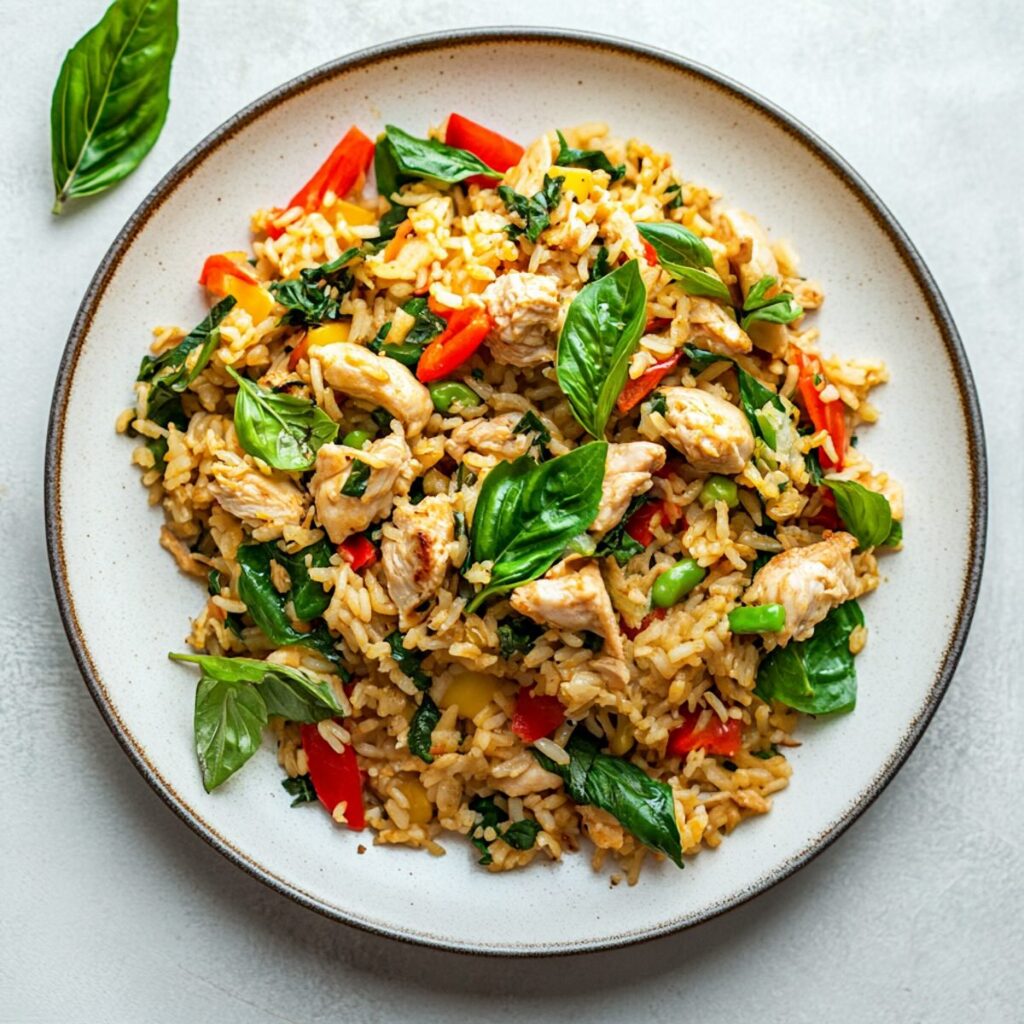
2. Keep the rice grains separate.
Right after making fresh rice that will be used for fried rice, it’s best to fluff it up to try to help keep the rice grains as separate as possible. The more the rice grains are together, the more moisture it creates and the more likely you will have weird textured fried rice.
If you don’t remember to break the rice apart and then refrigerate it, usually the rice solidifies into a big block. If that happens, just try to fluff the rice before you stir-fry it by using your hands with some oil on them, or two forks.
Also, when cooking fried rice, and it’s in the wok, it’s also important to keep the rice grains as far apart as possible. This means breaking it up and moving it around every chance you get. I like to use two spatulas to keep pulling the rice apart.
3. Don’t add much sauce.
Moisture is the enemy to fried rice! That’s why it’s important to not add too much sauce to your fried rice or it will goop as well. I just add a couple tablespoons of whatever sauce I’m using for the recipe, which is usually soy sauce, oyster sauce, fish sauce or a combo of two of those.
If I’m tasting fried rice, and I think it needs more flavor, and I’ve already added a few tablespoons of sauce, I will add more salt or sugar to it instead.
4. Chop your ingredients into uniform, bite-sized pieces.
Make sure all your ingredients that are going in with the rice are diced into bite-sized pieces. If there are big chunks of veggies or protein the star of the show, the rice, gets lost in the confusion.
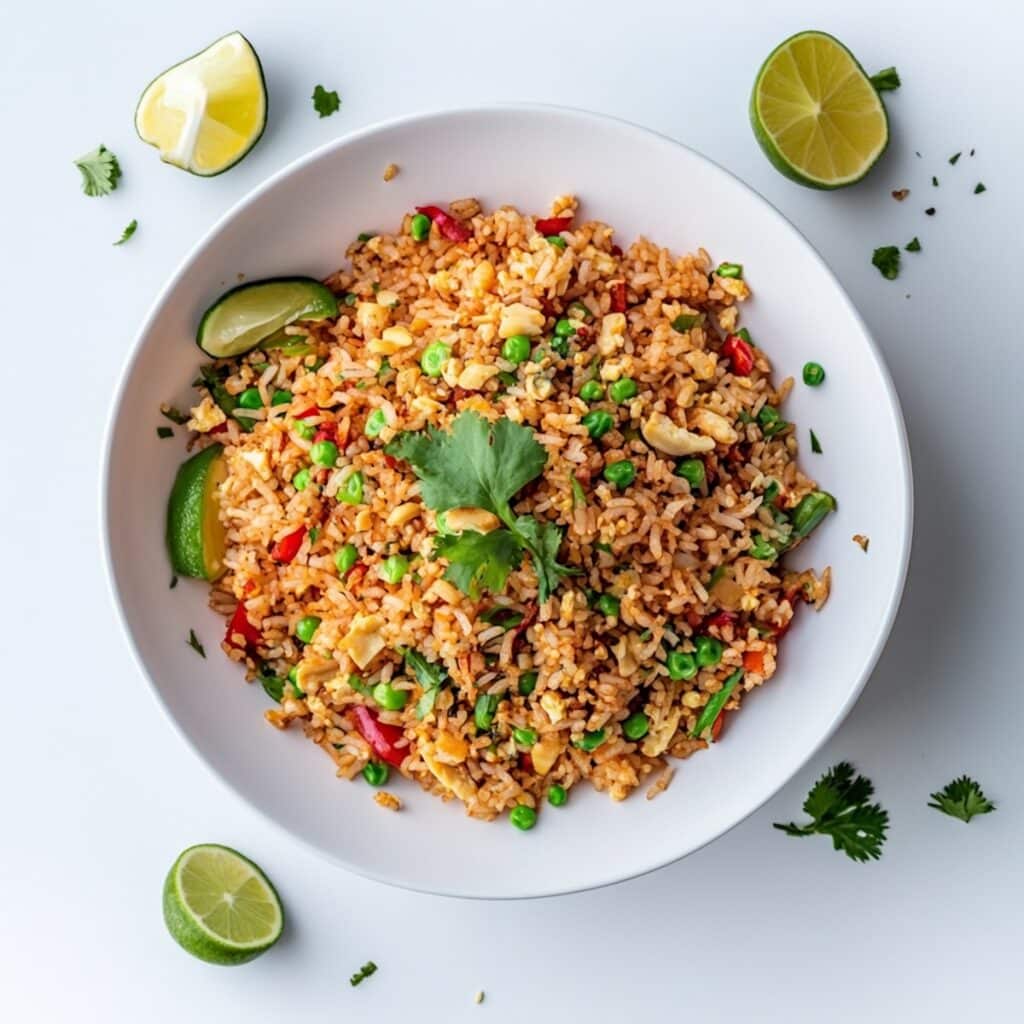
5. Figure out what ratio of rice to other ingredients you like.
If you like your fried rice to be just a side dish to a few other dishes, I recommend making it 1 cup of protein and 1 cup of veggies to 4 cups of rice. If you want your fried rice to be the only dish you are eating, we like to add 2 cups of protein and 2 cups of veggies to 4 cups of rice so it’s about half and half.
But really it’s up to you and whatever mood you are in!
Now I’m sure you are dying to make some fried rice! If so, I’ve got you covered. Here are all our lovely fried rice recipes!
Thai Pineapple Fried Rice Recipe
And I’m working on getting my Thai Green Curry Fried Rice Recipe up soon!

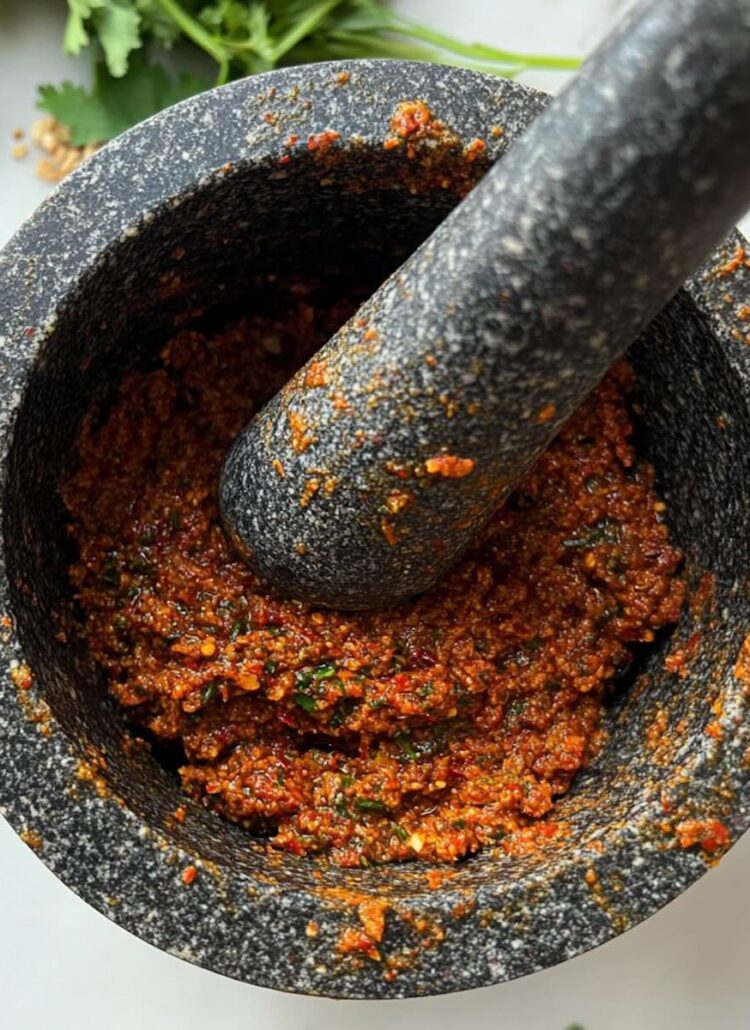
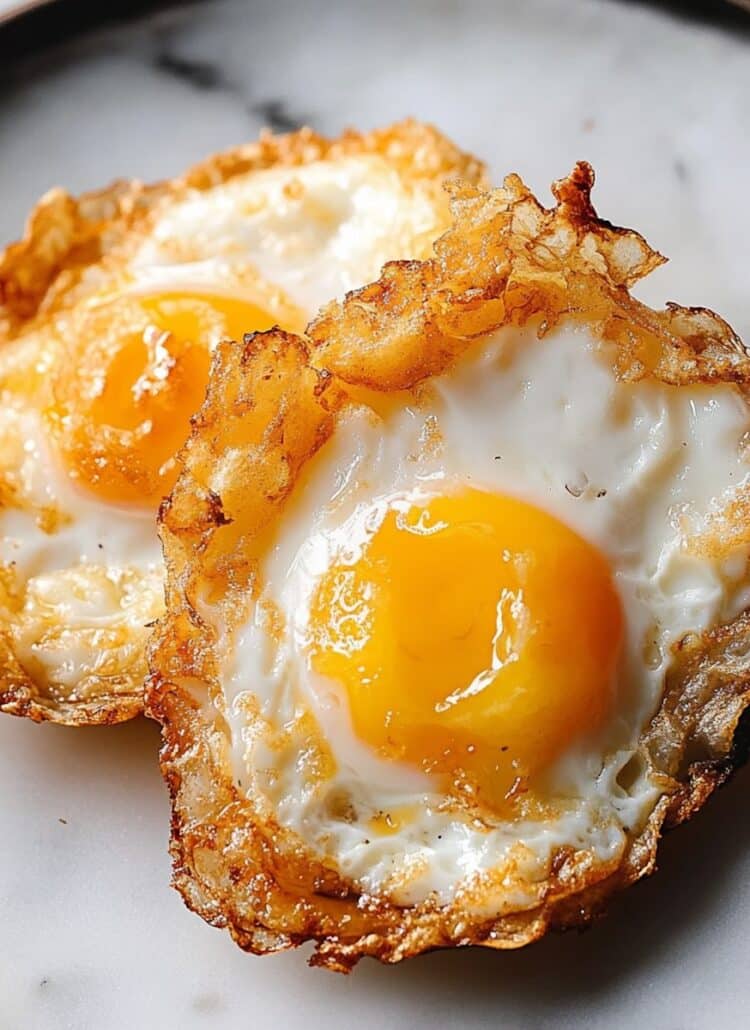

Wow! Great article! I can’t wait to try it! I lived in Chaing Mai for a few years,
check out my post on Regional Thai Food
https://thekneadfeed.com/the-best-regional-thai-dishes/
Thanks Graham! Hope the tips helped!